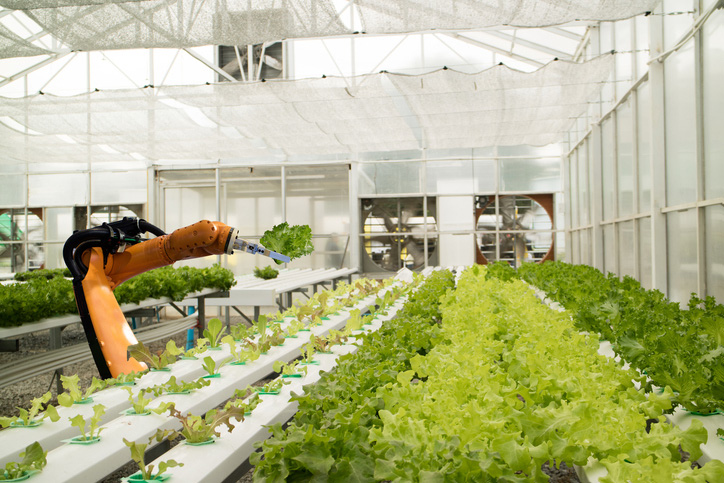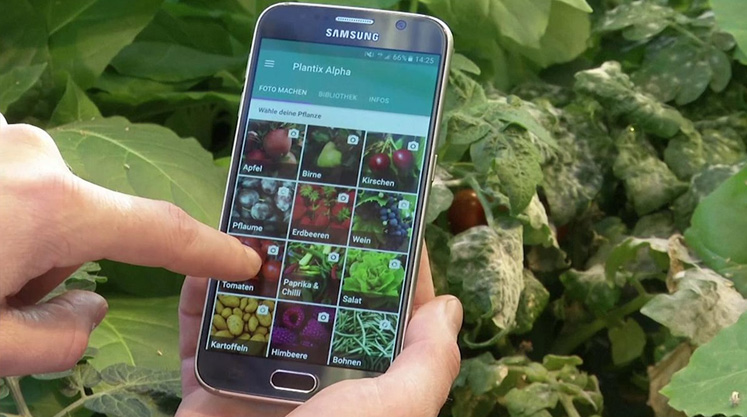Agricultural Robots: How They Ease Farm Labor

Planting, managing, and harvesting agricultural products require a lot of work. Unfortunately, farmers throughout the United States find it increasingly difficult to find enough workers for their fields. Some experts blame the multi-year decline in the number of immigrants coming to the U.S. for seasonal work. Others believe that an aging population of employees can't keep up with the challenging demands of agricultural work.
Regardless of why farmers can't keep up with the demand, tech companies say that they have an answer that requires very little from the workforce. Instead of relying on human employees, farms can turn to a new generation of agricultural robots that work autonomously and intelligently.

The New Generation of Agricultural Machines
Modern agriculture has always relied on machines to make work easier and more efficient. Even the smallest farms use cultivators, plows, and harrows. The new generation of agricultural machines, however, have a higher level of sophistication that makes automation possible. Many of them do more than automate planting and harvesting. They also use artificial intelligence to make decisions that improve a farm's success.

Controlling Weeds to Improve Crop Yields
Scientists and farmers already know that about 250 weed species have developed tolerances to herbicides. If herbicides suddenly stopped working, North America's soybean and corn growers would lose about $43 billion per year to lost crops.
A company called Blue River Technology wants to solve this problem with a robot it calls See & Spray. The robot patrols farmland and uses computer vision to detect weeds. When the robot encounters a weed, it can spray herbicides directly onto the invasive plant. The company estimates that its precision spraying technology can reduce the amount of herbicide used on farms by about 80%.
Using sophisticated robots to spray specific plants would help prevent species from developing herbicide resistance. It would also improve environmental conditions by keeping chemicals out of water systems. Currently, See & Spray only works with cotton producers, but it's easy to see how a few tweaks could make the technology useful for farms that grow other types.
Harvesting Robots Reduce the Need for Human Workers
It's unlikely that more workers will flood the agriculture industry in upcoming years, so it makes sense for farmers to purchase harvesting robots that reduce the need for human workers.
When ripe fruits and vegetables sit in the field, weather conditions, insects, and time can make the produce unusable. Several companies have already developed harvesting robots designed to harvest produce at the right time, making yields larger and improving profits. Panasonic has a robot that uses image recognition to determine the ripeness of tomatoes. When it finds tomatoes ready to harvest, it collects them. Harvest CROO Robotics has a strawberry harvester that uses 16 individual robots to collect ripe fruits.
Intelligent Robots Can Improve Soil Quality and Crop Yields
According to the USDA, soil erosion costs farmers about $44 billion per year. Poor soil quality can also decrease yields and lead to unhealthy plants.
Companies like CropDiagnosis and PEAT build apps that help farmers diagnose and improve unhealthy soil conditions. The apps use imaging and GPS technology to diagnose problems and suggest useful solutions. The technology still needs human guidance, but it's only a matter of time before someone gives a robot similar software to do the job without much oversight.

The Future of Agricultural Robots
Today's agricultural practices cannot meet the dietary needs of the planet's growing population. By 2050, more than 9 billion people will need fruits, vegetables, meats, and dairy products. According to the United Nations, farmers will need to increase the world's food supply by about 28% to feed those people.
Agricultural robots will play a crucial role in meeting the future population's dietary needs. Innovations may include robots that pollinate plants, maximize the amount of milk taken from cows, and use intensive farming practices to shrink the amount of land needed to grow food.
Picture Credit:
https://www.stltoday.com/business/local/robot-weed-killers-poised-to-disrupt-u-s-agriculture/article_23de3faa-cf06-5789-9672-fde3caf7bac1.html
https://www.robotics.org/blog-article.cfm/Robotics-in-Agriculture-Types-and-Applications/74
https://cloudblogs.microsoft.com/2018/11/29/feeding-the-world-with-ai-driven-agriculture-innovation/
https://www.euronews.com/2017/01/04/the-plant-doctor-app-helping-to-identify-plant-disease
Sources:
https://www.bloomberg.com/opinion/articles/2018-06-01/u-s-farms-need-more-immigrant-workers
http://www.environmentreports.com/enough-food-for-the-future/
http://wssa.net/2016/05/wssa-calculates-billions-in-potential-economic-losses-from-uncontrolled-weeds/
http://wssa.net/wp-content/uploads/WSSA-Fact-SheetFinal.pdf
https://news.panasonic.com/global/stories/2018/57801.html
https://wishfarms.com/future-agriculture-harvest-croo-robotics/
https://www.cropdiagnosis.com/portal/crops/en/home#modus-operandi
https://www.crunchbase.com/organization/peat#section-overview
Thanks for helping to keep our community civil!
This post is an advertisement, or vandalism. It is not useful or relevant to the current topic.
You flagged this as spam. Undo flag.Flag Post


